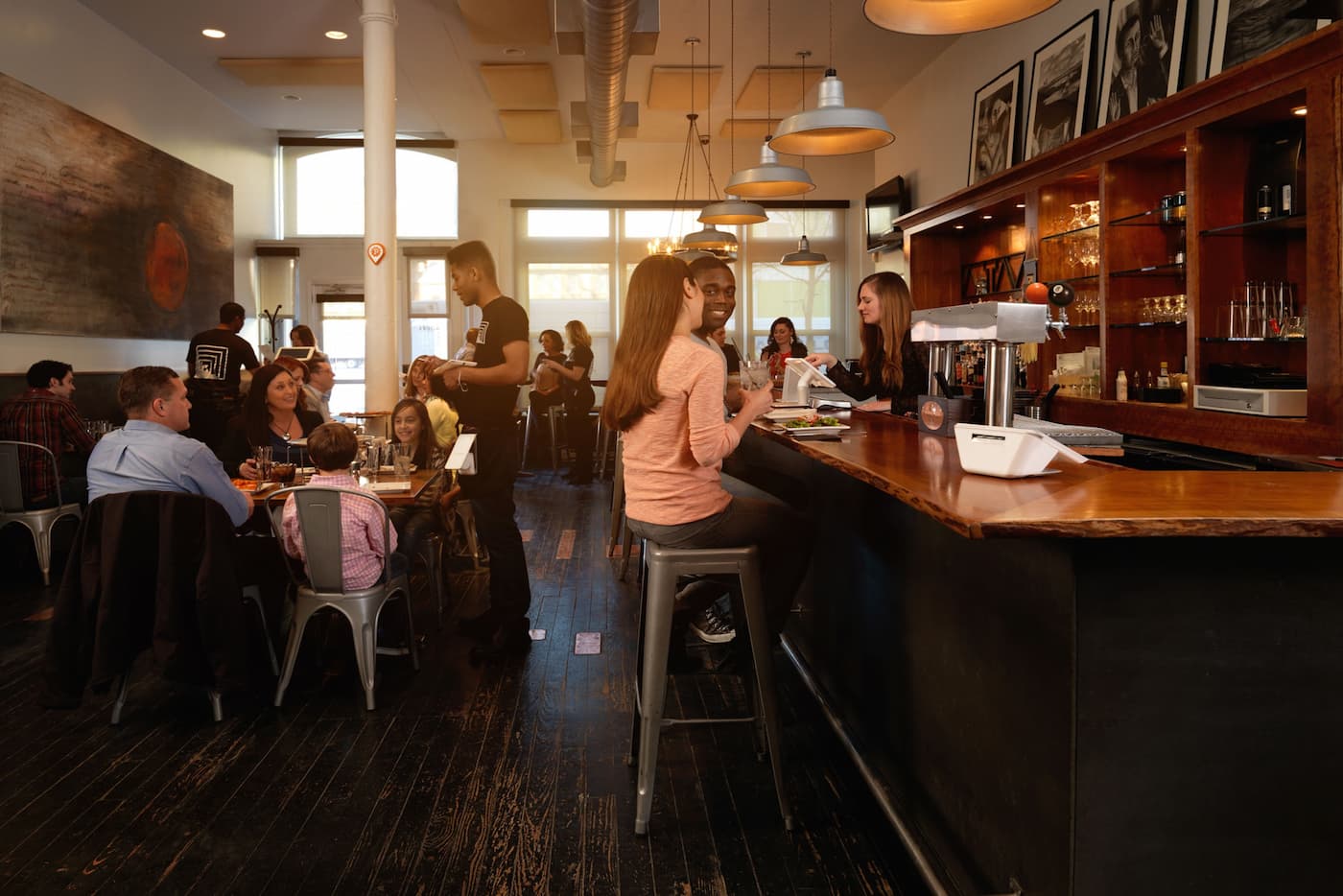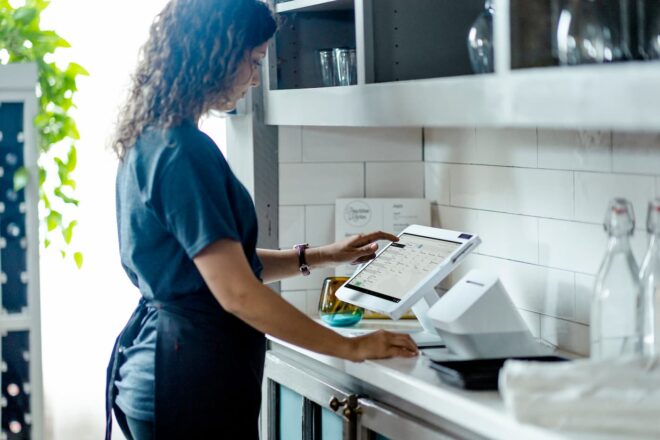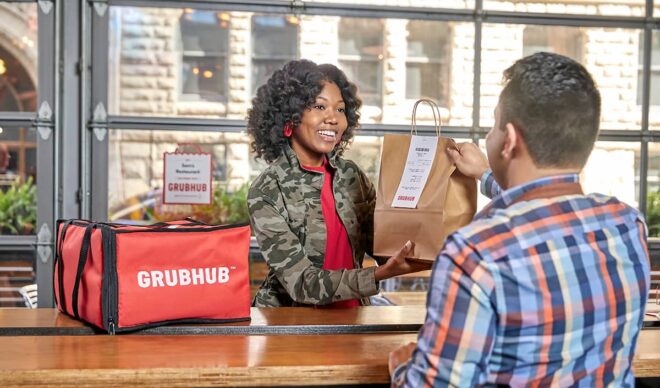11 types of restaurant categories & dining experiences
Editorial Team
5 min read
There is a wide variety of restaurant categories, each providing a different kind of experience. Types of restaurants can range from the convenience of quick service establishments to the luxury of fine dining.
- Quick service restaurant (QSR) (“fast food”)
- Casual dining
- Fast casual
- Fine dining (luxury)
- Café
- Food truck/cart/stand
- Ghost restaurant
- Buffet restaurant
- Pizzeria
- Pop-up restaurant
- Contemporary casual
However, before you start a new restaurant business or change your existing structure, you’ll have to consider the different types of restaurant service models. Knowing what kind of restaurant you want to own is important for every stage of development – from planning to implementation.
Here are 11 restaurant categories and types of dining experiences you could choose from for your business.
1. Quick service restaurant (QSR)(“fast food”)
Fast food is one of the most popular restaurant choices because of its convenience and relatively low cost. Many fast-food restaurants offer meal deals and a la carte menu items that enable customers to tailor their orders to their budget.
While ambiance and the in-restaurant experience is not typically the focus of most quick service restaurants, they remain popular all the same. These types of restaurants appeal to customers for a number of reasons, including wanting to eat out without spending a lot of money, or needing a convenient meal while running errands, traveling, or navigating a busy day.
2. Casual dining
Casual dining restaurants, also called full-service restaurants, offer table service combined with affordable menu items that consist of everything from alcohol to entrées. Casual dining eateries often offer extensive menus to accommodate large groups. These restaurants are popular for families, couples, and anyone seeking a dining experience that won’t break the bank.
3. Fast casual
If you took fast food and casual dining and combined them together into one restaurant experience, you’d get fast casual. These restaurants provide the speed and convenience of fast food with higher quality recipes and ingredients. Fast casual restaurants do not typically feature table service, instead using an order-at-the-counter structure similar to fast food.
Fast casual restaurants are becoming increasingly popular among people who want the speed of a fast-food restaurant with the higher quality food that they could get from a casual dining experience.
4. Fine dining (luxury)
Fine dining restaurants offer high-end in-restaurant experiences with attractive ambiance. They typically feature high-quality dishes with complex flavors, creative recipes, and exceptional customer service. These restaurants offer plenty of value, but they do not prioritize a low price. Additionally, fine dining establishments often serve top-shelf alcohol, may have a formal dress code, and expect specific etiquette among diners.
These restaurants nearly always offer table service and often provide a slower, more evenly paced meal with multiple courses. Fine dining appeals to people seeking a superior dining experience at whatever cost.
5. Café
Cafes offer a relaxed dining experience, serving small meals or snacks at a low to moderate price. Some cafes have limited seating, but offer a good meeting place for friends or small groups. Cafes typically have a limited menu that includes pastries and baked goods, sandwiches, breakfast items, coffee, and tea.
6. Food truck/cart/stand
Food trucks can sometimes be found in the same place every day, but offer the flexibility to travel from one location to another depending on the type of food they serve; the foot traffic in that area for the time of day; public or private events they attend. These “rolling” restaurants are similar to fast food businesses because diners order at the window and typically pay a relatively low price. However, food trucks may not always offer the speed of a fast-food restaurant and often do not provide much (if any) seating.
7. Ghost restaurant
A ghost restaurant offers delivery only, with no dining area to accommodate customers. Ghost kitchens are flexible establishments that may provide catering services, as well as food for delivery. These restaurants typically use third-party delivery services and rely on a strong social media presence to market their business to new and existing customers.
8. Buffet restaurant
Buffet restaurants are often similar to casual dining restaurants and offer a large spread of different types of dishes – from salads to entrees to desserts – in a display that allow customers to come back multiple times during their visit to refill their plates all for one fixed price.
Some buffet-style restaurants also offer a menu from which diners can order, as well. These restaurants typically appeal to the same type of customers who frequent casual dining establishments.
9. Pizzeria
Pizzerias are popular dining establishments that specialize in serving pizza, though many pizzerias also offer a small selection of salads and Italian-style dishes. Pizzerias can accommodate large groups for a relatively affordable price, and they offer a casual, quick dining experience with some ambiance, and often table service.
10. Pop-up restaurant
A pop-up restaurant is a temporary restaurant that allows chefs to showcase a type of food or menu to see how customers in a certain area will receive it. Pop-up restaurants are only available for a limited time, although the owners and organizers may eventually establish their menu in a more permanent location if the food is well received by customers.
11. Contemporary casual
If you combined casual dining and fine dining, you’d get a contemporary casual experience. These are popular in urban areas and often offer menu options that are organic, local, vegan, vegetarian, and so on. Contemporary casual restaurants have good ambiance with a lower price point than fine dining.
Ready to start your restaurant? Start with Clover
Clover’s team of problem solvers provides powerful point-of-sale solutions for small and medium businesses. We work with all types of restaurants and can help you select the POS system that meets your unique needs.
GET STARTEDRelated Posts
Fiserv powers full-service restaurants to succeed in today’s new operating environment with launch of Clover Station Solo
Make online orders with delivery simple with this Clover-Grubhub solution
Popular Topics
Stay in touch
Sign up and learn more about Clover.
Thank you for your subscription!
More posts about starting a small business
eBook





